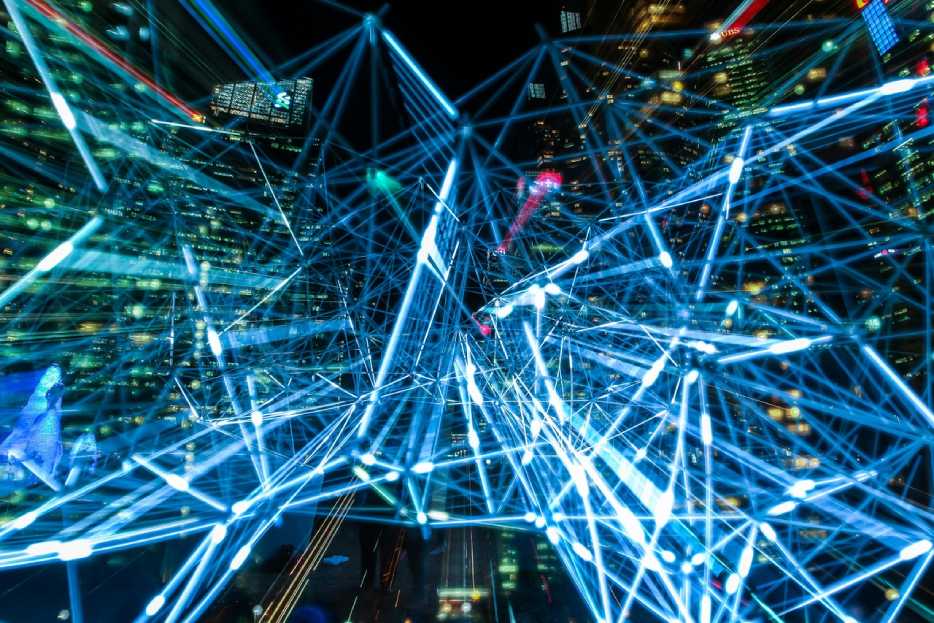Zen CEO Paul Stobart used his keynote at last year’s annual Comms Vision event to highlight an issue very close to his (and our) heart.
Coinciding as it did with the much-publicised COP26 event, instead of treading the regular ‘business-as-usual’ ground, Paul delivered an impassioned speech entitled: “The truth about climate change and while we must all act now.”
Sharing his own experience of only relatively recently understanding the magnitude of the climate crisis, Paul looked ahead to the year 2100 – the year by which the world needs to restrict global warming to no more than 1.5 degrees above pre-industrial levels. Although this may seem like a distant date, Paul observed that in 2100 his own grandchildren will likely be a similar age to his own today.
If those 1.5-degree targets are not met, by 2100 our world could be a very different place.
Much of the world will be cold
It isn’t what we imagine when we think of global warming, but by 2100 our own part of the world could be suffering extreme weather of a different variety.
Paul highlighted the likely conditions at Gleneagles, home of Comms Vision, painting a stark picture of snow drifts lasting 9 months of the year. When the snow finally melts in early June, severe flooding will lead to mudslides which tear away at the topsoil.
In 2021, we can thank the Atlantic Meridional Overturning Circulation, or AMOC, for ensuring that warm water is transported north and cold water to the south. But thanks to rapid ice melting, this circulation could be slowed which means – even in the context of general global warming – the northern hemisphere will become an intensely cold, bleak place.
At current rates, by 2300 we may even be looking at a new ice age in the north.
On the other hand, the global south is likely to become much hotter – to the point of uninhabitability.
Or underwater
By 2100, our oceans will be around two metres higher than they are today. That may not sound significant, but it will be enough to submerge the Marshall Islands, to destroy the arable land of many island nations and put large parts of London, East Yorkshire and other parts of the UK under water.
Paul used the analogy of a freight train, insisting that while ice melt is difficult and slow to start, once it is moving it is very hard to stop. And it is moving. In fact, Paul observed that even during his talk, 1,000 Olympic swimming pools of fresh water from ice melt would have flowed into the oceans – just under a swimming pool every second.
By 2300, sea levels could be 250 feet higher, creating an apocalyptic scenario with little chance of escape.
People will be hungry
Paul produced an alarming statistic; that for every degree of warming, grain yields decline by about 10% - a rate which increases as the heat gets more intense.
By 2100, with a global population of around 10 billion, there will be a lot of mouths to feed, but grain yields will be 40% lower than they are today. Large parts of the world will be incapable of growing anything at all, and more regular droughts and floods will make farming much more difficult.
And more carbon in the atmosphere reduces the nutrition in plants, a decline which has already been observed since 1950.
We will be thirsty too
Although 70% of the planet will be water, only 1% of that will be accessible fresh water – 75% of which will be needed for agriculture and food production, and 15% for industry, leaving only 10% for drinking.
Today, 2 billion people don’t have access to safe drinking water, and many more rely on high altitude snow and ice melts for their water needs – ice and snow that won’t exist in 2100.
Our fresh water needs are increasing, yet the supply will become increasingly scarce.
We will be on fire
In this year alone, we saw fires across at least 30 million acres – half the size of the UK. And what happens when all those trees burn? They release their carbon into the atmosphere, air quality suffers, drinking water is poisoned and subsequent mudslides can be lethal.
More forest fires mean an ever-increasing worsening of this problem.
The oceans will be dying
They cover 70% of the Earth’s surface and provide 20% of the animal protein in our diet, as well as absorbing huge quantities of CO2 and an enormous amount of the sun’s heat, but the oceans are dying.
Their ability to absorb carbon is diminishing and the amount of heat energy they absorb is unsustainable. Coral reefs – which support a quarter of all marine life – are declining, and as the oceans warm they will carry less oxygen. That will inevitably lead to a decline in marine life, and a worsening of an already worsening problem.
We will find it difficult to breathe
As our air is filled with more and more carbon - along with dust from drought, ash from wildfires and pollution from cars, planes and industry - smog will become commonplace.
Today in China, 10,000 people per day are dying from poor air quality. By 2100, more than 2 billion people will be living in unsafe conditions.
We will also be more ill. From Spanish Flu preserved in the frozen wastes of Alaska to bubonic plague and smallpox in Siberian ice, as the world thaws we will be subject to many more airborne diseases. Mosquito-borne disease – already on the rise – will be global by 2100, and – as Paul points out – there are many more unknown consequences of the reanimation of long-preserved bugs and parasites from our frozen tundra.
The global economy will be in tatters
It is predicted that, by 2100, the global economy could be 23% smaller than it would have been without climate change. Paul highlights research which concludes that human beings engage in optimum performance and efficiency at an external temperature of 13 degrees Celsius (right where the current UK and North American averages are today).
It is reckoned that GDP will slip by 1% with every degree of warming.
But worse than this, climate change will lead to the North becoming much better off than the South. Estimates suggest that GDP in Brazil will be at least 80% lower in 2100 than it would be without climate change. A similar situation will also emerge in Africa, Asia, the Middle East and Australia, with resulting mass migration, insurrection, civil unrest and war.
The conclusion
All of the above is based on current projections of 3-4 degrees of warming by the end of the century. And, as Paul forcefully observed, as things stand the world has little chance of achieving the 1.5-degree cap needed.
Just 50 years ago, when Paul was a schoolboy, there was no climate science research at all. Today, we are hurtling towards a disaster which Paul fears could be the beginning of the end of the human race – or at least a plummeting in quality of life.
When we look how much the world has changed in 50 years, it is unthinkable what things will be like by 2100. We have ignored the issue for too long, and many current innovations will no longer work at the scale required. The only credible way to do something of real difference is the immediate and sustained reduction of carbon emissions by 50%.
Expressing his fear and anger and the severity of the situation, Paul suggested five steps that need to be taken:
1) Reduction of fossil fuels by half, as soon as possible but certainly within the next ten years. Anything beyond that could be too little, too late to hit the 1.5-degree target.
2) Encourage government investment in nuclear which, despite people’s fears, is a safe, clean and efficient source of power. Renewables alone will not be able to satisfy our energy needs.
3) Encourage government investment in Hydrogen – a clean and efficient fuel. It is expensive to create, using a lot of electricity, but can be applied to many industries that currently rely on fossil fuels.
4) Continue to invest in carbon capture technology.
5) Encourage government to become as serious about the green agenda as it was about Covid. Both are existential threats to humanity, but Carbon is also a grave threat to all the species of flora and fauna on our planet. Carbon taxes should incentivise switching away from fossil fuels and investment in green energy and industry should be encouraged.
Looking into the distant future, Paul hopes that our grandchildren will look back at the people living now, in the 2020s, as making the world a safer and more bearable place. We started the decade as villains but with courage, dedication and sacrifice, alongside a tremendous shift in mindset and global collaboration, we can set the example for others to follow and set in motion one of the greatest achievements of our century.
If we act now, together we can save humankind.

Zen Internet - Home SalesSales
01706 902573
Zen Internet - Customer EnquiriesCustomer Enquiries
01706 902001


